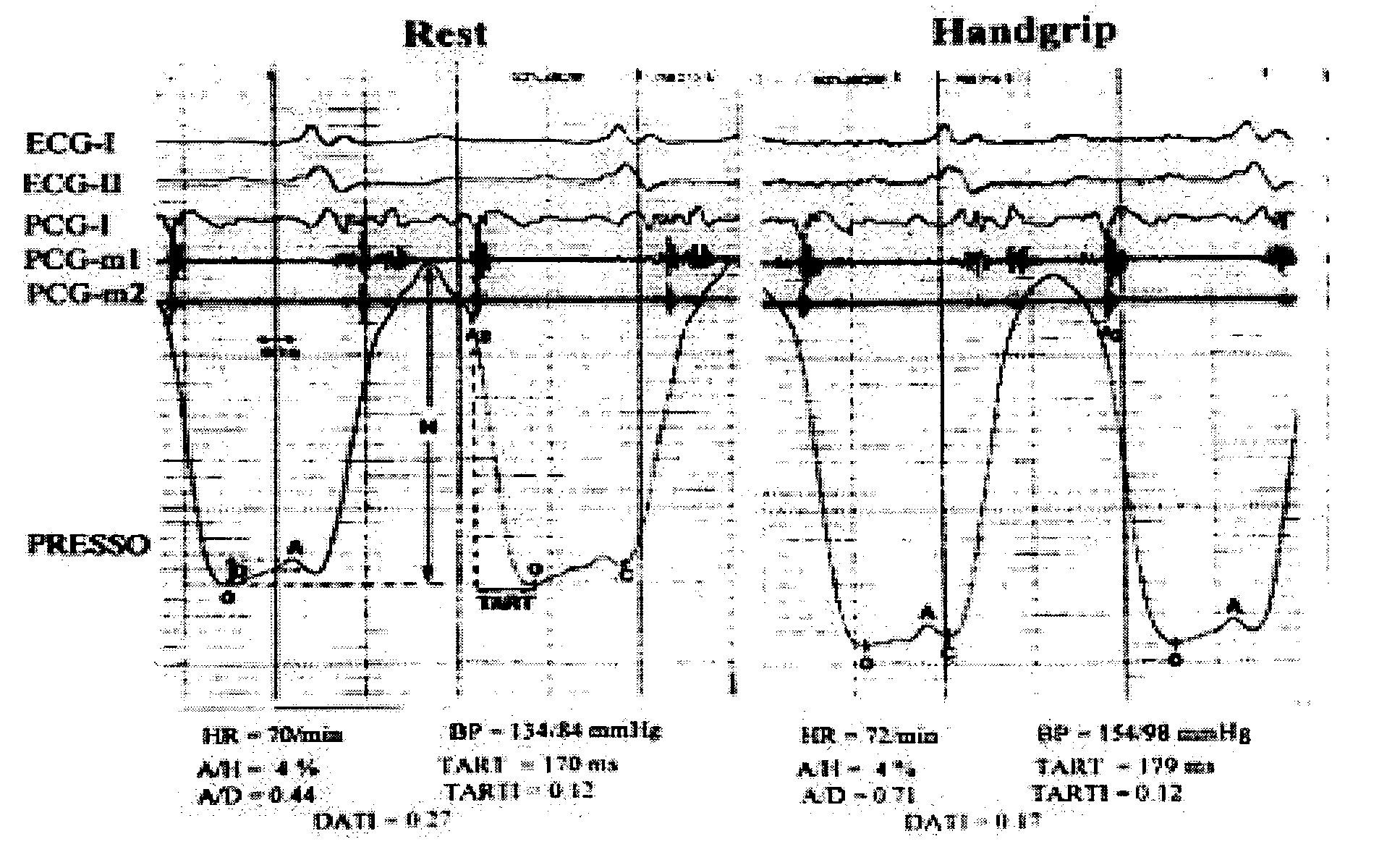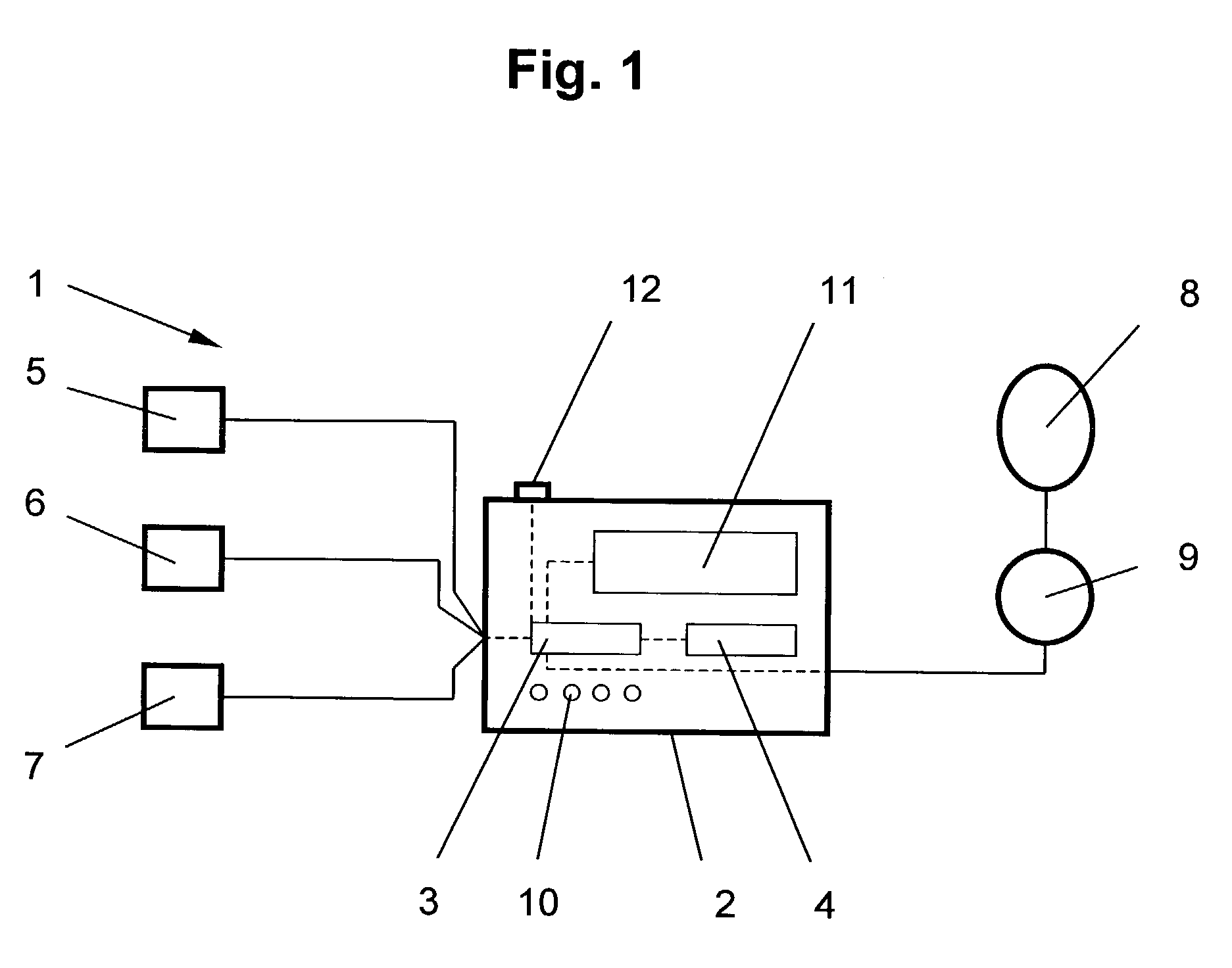Device for and method of rapid noninvasive measurement of parameters of diastolic function of left ventricle and automated evaluation of the measured profile of left ventricular function at rest and with exercise
a technology of diastolic function and measurement method, which is applied in the field of cardiac surgery, can solve the problems of inability to obtain high-fidelity tracings from the point of maximal pulse of the heart beat, current methods of measuring diastolic lv function are either extremely invasive or/and costly or/and noninvasive imaging approaches that require expertise and time-consuming measurements by highly skilled operators, and doppler techniques require highly and expensively developed laboratories as well as skilled interpretation. ,
- Summary
- Abstract
- Description
- Claims
- Application Information
AI Technical Summary
Benefits of technology
Problems solved by technology
Method used
Image
Examples
Embodiment Construction
[0117]FIG. 1 shows a graphic illustration of an apparatus 1 for Handgrip-pressocardiographic test analysis and particularly for determining and calculating parameters of diastolic function of the left ventricle comprising a casing 2 which includes a control device 3 and interpretation unit 4. Further, casing 2 is connected to the following pick up units: the pressure transducer 5 for obtaining a tracing which mirrors left ventricular pressure, the heart sounds (phono) microphone 6 for recording the second heart sound and an electrical recorder 7 for recording ECG. Apparatus 1 includes also a device 8 for allowing the patient to perform an isometric exercise.
[0118]Control device 3 controls detection and processing of the parameters measured and data output; it also includes a programm for guiding a user. The interpretation unit 4 is connected with or implemented in control device 3. Both form an external utilization unit which determines and calculates characteristic diastolic parame...
PUM
 Login to View More
Login to View More Abstract
Description
Claims
Application Information
 Login to View More
Login to View More - R&D
- Intellectual Property
- Life Sciences
- Materials
- Tech Scout
- Unparalleled Data Quality
- Higher Quality Content
- 60% Fewer Hallucinations
Browse by: Latest US Patents, China's latest patents, Technical Efficacy Thesaurus, Application Domain, Technology Topic, Popular Technical Reports.
© 2025 PatSnap. All rights reserved.Legal|Privacy policy|Modern Slavery Act Transparency Statement|Sitemap|About US| Contact US: help@patsnap.com



